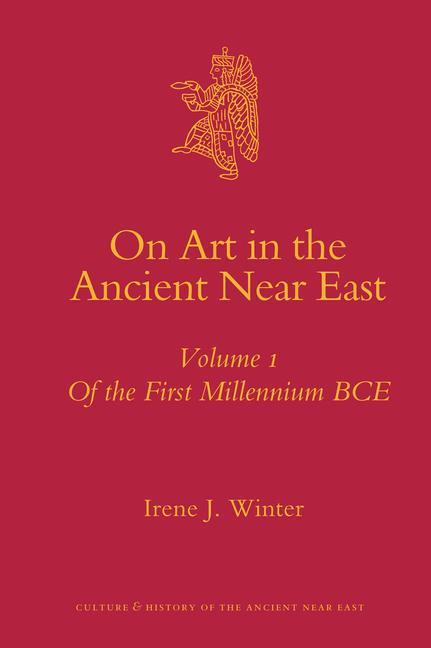
Zustellung: Sa, 26.07. - Fr, 01.08.
Versand in 3-4 Wochen
VersandkostenfreiThis two volume work is a collection of articles spanning the distinguished career of Irene J. Winter. The articles represent a cross-section of Winter's study of visual culture in the ancient Near East and cover the time period from the third to the first millennium BCE, with excursions into the contemporary. These two works will be useful to scholars and students interested in art history, cultural studies, architecture, archaeology, language, and ethnography of ancient Mesopotamia and its surrounding areas. Each volume may be purchased separately or as a set.
Inhaltsverzeichnis
Chapter One- Royal Rhetoric and the Development of Historical Narrative in Neo-Assyrian
Chapter Two- Art in Empire: The Royal Image and the Visual Dimensions of Assyrian Ideology
Chapter Three- Le Palais imaginaire: Scale and Meaning in the Iconography of Neo-Assyrian Cylinder
Chapter Four- Ornament and the "Rhetoric of Abundance" in Assyria
BRONZE AND IVORY/LUXURY GOODS Chapter Five- Phoenician and North Syrian Ivory Carving in Historical Context: Questions of Style and Distribution
Chapter Six Carved Ivory Furniture Panels from Nimrud: A Coherent Subgroup of the North Syrian Style
Chapter Seven- Is There a South Syrian Style of Ivory Carving in the Early First Millennium b.c.?
Chapter Eight- North Syria as a Bronzeworking Centre in the Early First Millennium b.c.: Luxury Commodities at Home and Abroad
Chapter Nine- North Syrian Ivories and Tell Halaf Reliefs: The Impact of Luxury Goods upon "Major" Arts
Chapter Ten- Establishing Group Boundaries: Toward Methodological Refinement in the Determination of Sets as a Prior Condition to the Analysis of Cultural Contact and/or Innovation in First Millennium b.c.e. Ivory Carving
INTERACTIONS OF TIME AND SPACE Chapter Eleven- Perspective on the "Local Style" of Hasanlu IVB: A Study in Receptivity
Chapter Twelve- On the Problems of Karatepe: The Reliefs and Their Context
Chapter Thirteen- Art as Evidence for Interaction: Relations between the Assyrian Empire and North Syria
Chapter Fourteen- Carchemish sa kisad puratti
Chapter Fifteen- Homer's Phoenicians: History, Ethnography, or Literary Trope? [A Perspective on Early Orientalism]
Chapter Two- Art in Empire: The Royal Image and the Visual Dimensions of Assyrian Ideology
Chapter Three- Le Palais imaginaire: Scale and Meaning in the Iconography of Neo-Assyrian Cylinder
Chapter Four- Ornament and the "Rhetoric of Abundance" in Assyria
BRONZE AND IVORY/LUXURY GOODS Chapter Five- Phoenician and North Syrian Ivory Carving in Historical Context: Questions of Style and Distribution
Chapter Six Carved Ivory Furniture Panels from Nimrud: A Coherent Subgroup of the North Syrian Style
Chapter Seven- Is There a South Syrian Style of Ivory Carving in the Early First Millennium b.c.?
Chapter Eight- North Syria as a Bronzeworking Centre in the Early First Millennium b.c.: Luxury Commodities at Home and Abroad
Chapter Nine- North Syrian Ivories and Tell Halaf Reliefs: The Impact of Luxury Goods upon "Major" Arts
Chapter Ten- Establishing Group Boundaries: Toward Methodological Refinement in the Determination of Sets as a Prior Condition to the Analysis of Cultural Contact and/or Innovation in First Millennium b.c.e. Ivory Carving
INTERACTIONS OF TIME AND SPACE Chapter Eleven- Perspective on the "Local Style" of Hasanlu IVB: A Study in Receptivity
Chapter Twelve- On the Problems of Karatepe: The Reliefs and Their Context
Chapter Thirteen- Art as Evidence for Interaction: Relations between the Assyrian Empire and North Syria
Chapter Fourteen- Carchemish sa kisad puratti
Chapter Fifteen- Homer's Phoenicians: History, Ethnography, or Literary Trope? [A Perspective on Early Orientalism]
Produktdetails
Erscheinungsdatum
27. November 2009
Sprache
englisch
Seitenanzahl
1182
Autor/Autorin
Irene J Winter
Verlag/Hersteller
Produktart
gebunden
Gewicht
2966 g
ISBN
9789004175006
Bewertungen
0 Bewertungen
Es wurden noch keine Bewertungen abgegeben. Schreiben Sie die erste Bewertung zu "On Art in the Ancient Near East (2 Vols)" und helfen Sie damit anderen bei der Kaufentscheidung.







